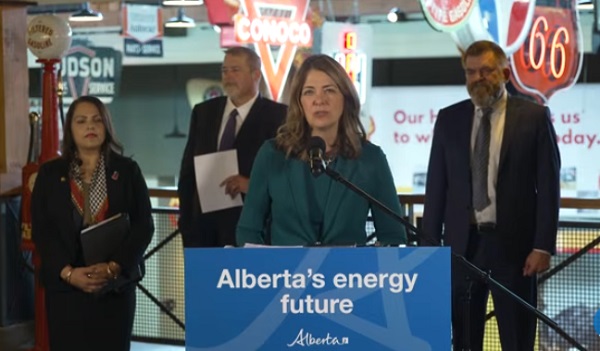Indigenous
The Quiet Remaking of Canada
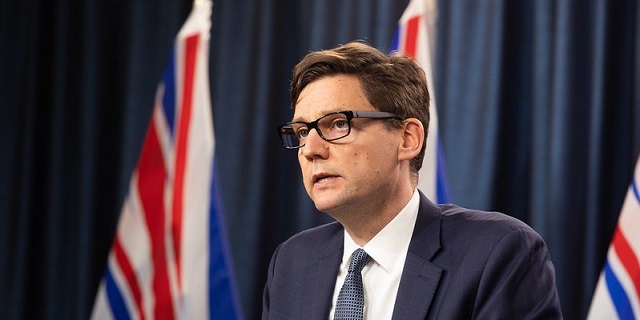
From the Frontier Centre for Public Policy
B.C. residents sat up and took notice of this shocking change when the Eby government announced that it planned to embark on a plan of “co-governance” with its indigenous population – a plan that would have given 5% of B.C.’s population a veto over every aspect of public land useage in the province.
Most Canadians are unaware that a campaign to remake Canada is underway. The conception of that most Canadians have of their country – that it is, one nation, in which citizens of different ethnic, religious and racial groups are all treated equally, under one set of laws – is being fundamentally transformed. B.C. residents sat up and took notice of this shocking change when the Eby government announced that it planned to embark on a plan of “co-governance” with its indigenous population – a plan that would have given 5% of B.C.’s population a veto over every aspect of public land useage in the province.
An emphatic “No” from an overwhelming majority of citizens put an end to this scheme – at least temporarily.
But the Eby government continues to move forward with its plan to transform the province into a multitude of semi-autonomous indigenous nations to accommodate that 5% of the indigenous B.C. population. It is proceeding with a plan that recognizes the Haida nation’s aboriginal title to the entire area of the traditional Haida territory. It would basically make Haida Gwaii into what would in essence be a semi-independent nation, ruled by Haida tribal law.
Many of us are familiar with that exceptionally beautiful part of Canada, where the Haida have lived for thousands of years. Misty Haida Gwaii, formerly known as the Queen Charlotte Islands, is a magical place. Until now, it has been a part of Canada. How would this Haida agreement change that?
Non-Haida residents of Haida Gwaii are probably asking themselves that question. Although they are being told that their fee simple ownership and other rights will not be affected by the Haida agreement, is that true? If one must be Haida by DNA to fully participate in decisions, how can it be argued that non Haida residents have rights equal to a Haida?
For example, the Supreme Court ruled in the Vuntut Gwitchin case that, based on the allegedly greater need of maintaining so-called Indigenous cultural “difference”, individual Indigenous Canadians can now be deprived by their band governments of their rights under the Canadian Charter of Rights and Freedoms on their home reserves and self-governing territories. Simply put, the law of the collective- namely tribal law- will apply.
So, tribal law takes precedence over Canadian law. And will a non-Haida resident be deprived of rights that he would enjoy anywhere else in Canada? For that matter, will an indigenous, but non-Haida, resident have equal rights to a Haida, if he can’t vote in Haida elections? Will this plan dilute, or even eliminate, fee simple ownership for some.
Or this: Does a provincial government even have the power to make such an agreement in the first place? After all Section 91(24) of our Constitution Act gives the federal government responsibility for status Indians.
These are but a few of the many questions that has B.C. residents asking many questions. In fact, the proposed Haida agreement will likely be front and centre in the upcoming provincial election, and could usher in decades of litigation and uncertainty.
But the Eby government has made it clear that the Haida agreement will be the template for others that will follow. Considering the fact that there are at least 200 separate indigenous communities in B.C. this would be a very ambitious undertaking – especially in light of the fact that most of those 200 or so communities are tiny, and almost all are dependent on taxpayers for their continued existence.
Eby is responding to the Supreme Court’s astounding decision that aboriginal title existed, unless it had been surrendered by treaty. The court relied on the Royal Proclamation of 1763 to come to this decision. This was after what was the longest trial in the history of B.C. wherein the trial judge in that case, Chief Justice Allan McEachern, had written a masterful decision finding that aboriginal title did not exist as claimed by the indigenous parties to the action. The Supreme Court went on in subsequent cases to transform Canadian indigenous law and expand section 35 in a manner that emphasized the need for “reconciliation”, the primacy of the collective over the rights of the individual for indigenous people, and the need for indigenous “nation to nation” separateness, instead of assimilation. All of this was done by judicial fiat, with absolutely no input from the Canadian public. Senior Ontario lawyer, Peter Best, describes this radical transformation of Canada in his epic work, “There Is No Difference”.
The unfortunate decision by both the federal government and the B.C. government to adopt UNDRIP, (United Nations Declaration on the Rights of Aboriginal Peoples) and B.C.’s provincial version, DRIPA, (Declaration on the Rights of Indigenous Peoples) further muddied the waters.
What British Columbia will look like in 10 years is anyone’s guess, if the hundreds of indigenous communities in B.C. are successful in obtaining agreements similar to what the Haida negotiate. It also seems very likely that indigenous communities in other parts of Canada will see what the B.C. communities achieved, and want the same additional autonomy and land rights for themselves. In the treaty areas of Canada, namely mainly the prairies and parts of the north, the treaties, in theory, settle the issue. But, if the B.C. Indians succeed in obtaining superior entitlements, the treaty Indians will almost certainly agitate for “modern treaties” that include what the Haida received.
And the citizens of eastern Canada, who believe that their indigenous claims have been permanently settled long ago, are probably in for a rude shock. In “A New Look at Canadian Indian Policy” the late Gordon Gibson quotes a former senior bureaucrat in Indian Affairs who insisted on remaining anonymous. That source says bluntly that all of Canada will be at play if Canada does indeed become the “patchwork of tiny Bantustans” that journalist and visionary Jon Kay predicted in 2001, if we keep going down this “nation to nation” path.
In fact, it is quite possible that every one of the 600 or so indigenous communities in Canada will end up with at least as much “separateness” as the Haida obtained. Canada will be fundamentally transformed into a crazy quilt of mainly dependent reserves governed by tribal law. Surely the Fathers of Confederation didn’t work so hard to end up with such a backward, fractured Canada?
As we see this fundamental transformation taking place in B.C., and then heading eastward, I suspect that Canadians who do not want such a future for their country will start to ask themselves how we arrived at this point. How can a nation be fundamentally transformed with no input from the citizens? Don’t the Canadian people have to be consulted, as we watch our country being transformed by judicial fiat and tribal law? Doesn’t a constitutional process have to be invoked, as happened in the failed Meech Lake or Charlottetown Accords?
Most Canadians believe that history has not been kind to indigenous people, and that indigenous have legitimate claims that need to be addressed. But most Canadians also believe that Canada is one country, in which everyone should be equal.
Canadians also firmly believe that Canada should not be divided into racial enclaves, where different sets of laws are applied to different racial or ethnic groups. In fact, most Canadians would probably support the sub-title of the late Gordon Gibson book cited above: “Respect the Collective – Support the Individual”. Canadians want to see indigenous people succeed, and they support indigenous people in their fierce determination to hold on to their indigenous identity and culture. But they want indigenous people to succeed as Canadians – not in a Canada that has been carved up into racial ghettos, like slices of a cheap pizza.
The Haida agreement is the first highly visible slice – a symbol of a semi-independent “nation” within Canada, that will be governed by rights of the collective tribal law – as opposed to the rights of the individual. That takes us back thousands of years. Before the Haida agreement inspires hundreds of other such racial mini-states within Canada, should Canadians not have a say in what our country is becoming?
Or will we continue to let unelected judges, and faceless bureaucrats, determine our fate?
Brian Giesbrecht, retired judge, is a Senior Fellow at the Frontier Centre for Public Policy
Indigenous
Bloodvein First Nation blockade puts public land rights at risk
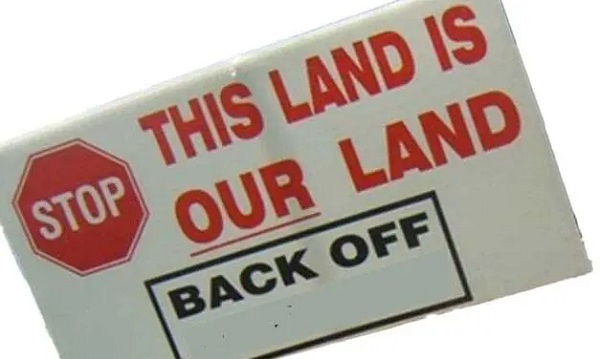
This article supplied by Troy Media.
The Bloodvein blockade of Crown land is illegal. Canadians must insist on the rule of law, or watch public land quietly slip away
The Bloodvein First Nation in northeastern Manitoba has erected a blockade on Crown land, barring non Indigenous hunters from accessing a large area surrounding its reserve. While the move may reflect frustration with provincial policies or rising tensions over land use, there’s one inescapable fact: it is illegal.
Yet you wouldn’t know that from media coverage.
CBC, for instance, referred to the affected area as “its land,” quoting First Nations leaders and provincial politicians who appear to believe that land surrounding a reserve belongs to the First Nation itself. It does not. The land in question is Crown land—public land owned and managed by governments on behalf of all Canadians, not by any individual or group.
Bloodvein is governed under Treaty 5, which, like other numbered treaties, involved the full cession of land to the Crown. The numbered treaties, signed between 1871 and 1921, were formal agreements between Indigenous nations and the federal government. In exchange for surrendering large territories, First Nations received reserved land, annual payments and the right to hunt and fish on unoccupied Crown land, among other benefits.
The language in Treaty 5 is clear: Indigenous signatories “cede, release, surrender and yield up” all rights and title to the land in question. While the treaty permits hunting and fishing on Crown land, those rights are subject to regulation and can be overridden when land is needed for settlement, resource development
or other public uses.
This framework was reinforced in 1930 through the Natural Resources Transfer Agreements, which granted provinces full control over Crown lands and resource management, while protecting treaty-based hunting and fishing rights.
This means Bloodvein residents, like all Indigenous peoples in Manitoba, retain the right to hunt and fish on Crown land, but they do not have the right to prevent others from doing the same.
The Manitoba Wildlife Federation has called the blockade unlawful and urged the government to act. So far, Manitoba Premier Wab Kinew has remained silent. That silence sends the wrong message, not just about this specific dispute, but about the rule of law more broadly.
While public sympathy for reconciliation is real, so too is concern that Indigenous land claims are increasingly encroaching on public and private property rights.
Cases like the Cowichan Tribes’ recent title claim, supported by oral history and largely untested assertions of continuous occupation, are raising alarm bells for
property owners, especially in British Columbia, where court decisions have cast doubt on long-held ownership rights.
At the heart of these cases is “Aboriginal title”: a legal concept created by Canadian courts that recognizes ongoing Indigenous land rights based on historic occupation, even in the absence of a treaty. These claims, if successful, can override existing property titles and affect both public and private lands.
That concern is compounded by public messaging. Terms like “unceded territory,” “stolen land” and “traditional lands” are now used uncritically in media and government communications. That messaging includes the widespread use of land acknowledgements, statements recognizing that land is historically Indigenous territory. While often intended as gestures of respect, these acknowledgements are also used by some activists to reinforce legal and political claims to land.
Canadians have sat through countless land acknowledgements without being told that these rituals are often linked to broader strategies aimed at asserting expanded territorial control. Many are now asking: How far will this go?
If we are to preserve a fair and functioning system of property rights, the public must insist that governments enforce existing laws, even when it’s politically difficult. Crown land belongs to all Canadians. Indigenous groups have rights, important ones protected by treaty and by law, but so do other Canadians. Those rights must not be overridden by unilateral action or political inertia.
Premier Kinew and other provincial leaders need to reaffirm that the rule of law applies to everyone. That means making it clear: the Bloodvein blockade has no
legal standing and should be removed. Canadians—Indigenous and non Indigenous alike—have equal rights to access public land under the law. Respect for treaty rights requires clarity and honesty about what those treaties say. They must not be reinterpreted after the fact through the lens of modern politics or public pressure.
Crown land is not a bargaining chip. It’s a trust held for all Canadians. If politicians won’t defend it, then Canadians must—because public land isn’t something we give away to silence criticism. It’s something we defend, together.
Brian Giesbrecht is a retired judge and a senior fellow at the Frontier Centre for Public Policy.
Troy Media empowers Canadian community news outlets by providing independent, insightful analysis and commentary. Our mission is to support local media in helping Canadians stay informed and engaged by delivering reliable content that strengthens community connections and deepens understanding across the country.
Fraser Institute
Aboriginal rights now more constitutionally powerful than any Charter right
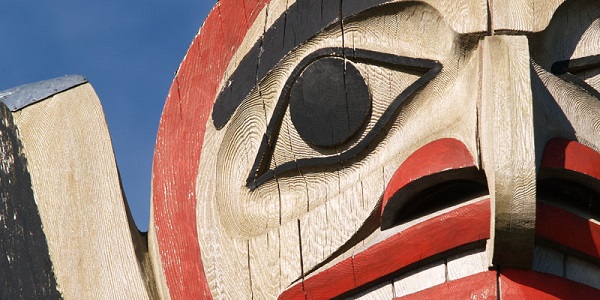
From the Fraser Institute
By Bruce Pardy
A judge of the British Columbia Supreme Court recently found that the Cowichan First Nation holds Aboriginal title over 800 acres of government land in Richmond, British Columbia. Wherever Aboriginal title is found to exist, said the court, it’s a “prior and senior right” to fee simple title, whether public or private. That means it trumps the property that Canadians hold in their houses, farms and factories.
In Canada, property rights do not have constitutional status. No right to property is included in the Charter of Rights and Freedoms. Fee simple title is merely a gloss on the state’s constitutional authority to tax, regulate and expropriate private property as it sees fit. But Aboriginal rights are different. They have become more constitutionally powerful than any Charter right.
In 1968, then-Justice Minister Pierre Trudeau released a consultation paper that proposed a constitutional charter of human rights. It was the first iteration of what would become the Charter. In the paper, Trudeau proposed to guarantee a right to property. So did drafts that followed. But some provincial governments were dead set against entrenching property rights. By 1980, property had been dropped from proposals. The final version of the Charter, adopted in 1982, does not mention it. Canada’s Constitution does not protect property rights.
Except for Aboriginal property. Trudeau’s 1968 paper made no mention of Aboriginal rights, nor did drafts leading up to the 1980 proposal. Aboriginal groups and their supporters launched a campaign to have Aboriginal rights recognized. They succeeded just in time. Section 35, essentially an afterthought, recognized and affirmed the “existing aboriginal and treaty rights of the aboriginal peoples of Canada.” That section was put into the Constitution but not as part of the Charter. That might sound like section 35 is weaker than a Charter right, but it’s the opposite.
Section 35 affirms Aboriginal rights that existed as of 1982. But since 1982, the Supreme Court of Canada has used section 35 to champion, enlarge and reimagine Aboriginal rights. The Court has “discovered” rights never recognized in the law before 1982. In 1997, it articulated a new vision of Aboriginal title. In 2004, it established the Crown’s “duty to consult.” In 2014, it recognized Aboriginal title over a tract of Crown land. In 2021, it gave Aboriginal rights under section 35 to an American Indigenous group.
Now the B.C. court in the Cowichan decision has said that Aboriginal title takes precedence over private property. Last November, a judge of the New Brunswick King’s Bench suggested similarly. Where a claim of Aboriginal title succeeds over land held in fee simple, she said, the court may instruct the government to expropriate the private property and hand it over to the Aboriginal group.
Governments and legislatures have shown little inclination to turn back these developments. But even if they wanted to, the Constitution stands in the way.
Section 33 of the Charter, the “Notwithstanding clause” (NWC), allows provincial legislatures and the federal Parliament to enact legislation notwithstanding the Charter rights guaranteed in sections 2 and 7 to 15. That means that they can pass statutes that might infringe these Charter rights. Use of the NWC clause prevents courts from striking down the statute as unconstitutional. The main part of the NWC reads:
33. (1) Parliament or the legislature of a province may expressly declare in an Act of Parliament or of the legislature, as the case may be, that the Act or a provision thereof shall operate notwithstanding a provision included in section 2 or sections 7 to 15 of this Charter.
Section 35 is not part of the Charter. It is not subject to the NWC. Legislatures cannot ignore it, legislate around it, or change its meaning. Barring a constitutional amendment, courts have exclusive domain over the scope and application of section 35. In the constitutional hierarchy, Aboriginal rights rest above the “fundamental freedoms” and rights of the Charter.
Lest there was any doubt about that status, section 25 of the Charter spells it out. Charter rights and freedoms, the section says, “shall not be construed so as to abrogate or derogate from any aboriginal, treaty or other rights or freedoms that pertain to the aboriginal peoples of Canada.”
That does not mean that Aboriginal rights are absolute. Legislation or government action may sometimes infringe Aboriginal rights. But courts, not legislatures, control when, where, and under what circumstances that can happen. The Supreme Court of Canada has established the process and criteria by which governments must justify infringements of section 35 to the courts’ satisfaction.
Section 35, like much of the rest of the Constitution, is subject to an onerous amending formula. It cannot be easily changed or repealed.
-
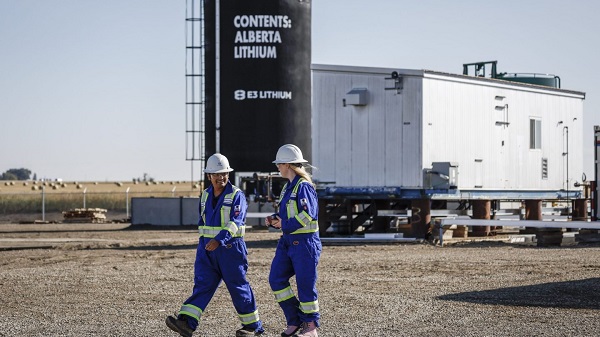
 Alberta2 days ago
Alberta2 days agoAlberta’s E3 Lithium delivers first battery-grade lithium carbonate
-
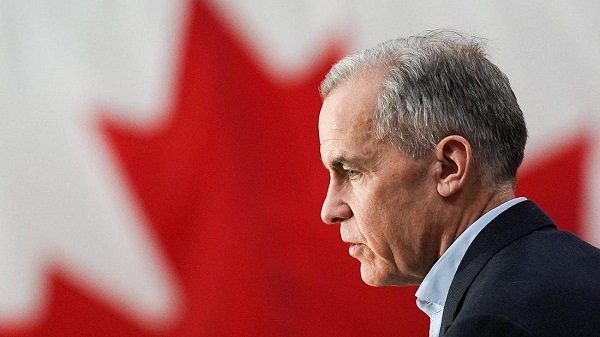
 Automotive2 days ago
Automotive2 days agoCanada’s EV subsidies are wracking up billions in losses for taxpayers, and not just in the auto industry
-
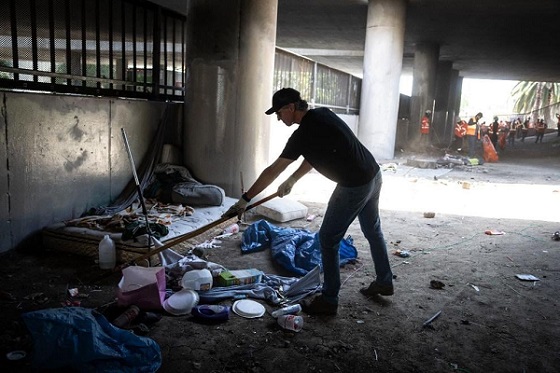
 Business2 days ago
Business2 days agoLA skyscrapers for homeless could cost federal taxpayers over $1 billion
-

 Crime1 day ago
Crime1 day agoThe “Strong Borders Act,” Misses the Mark — Only Deep Legal Reforms Will Confront Canada’s Fentanyl Networks
-
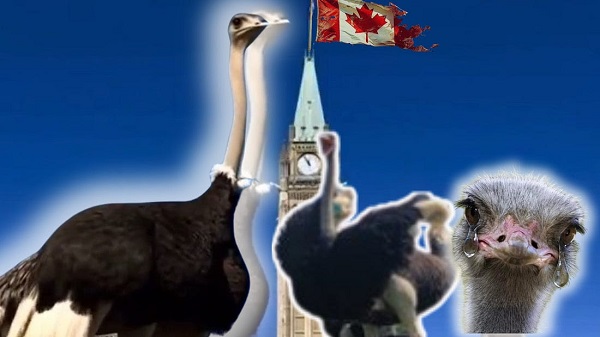
 Agriculture20 hours ago
Agriculture20 hours ago“We Made it”: Healthy Ostriches Still Alive in Canada
-
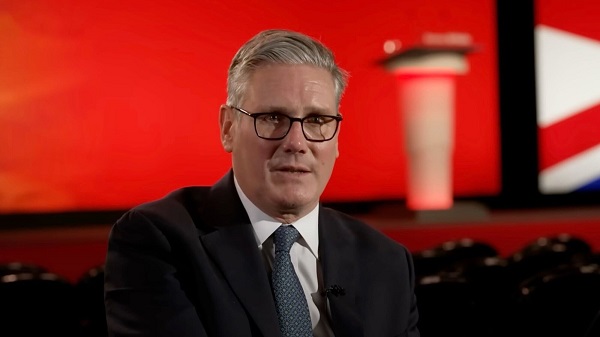
 Business1 day ago
Business1 day agoUK Government Dismisses Public Outcry, Pushes Ahead with Controversial Digital ID Plan
-

 Energy2 days ago
Energy2 days agoNuclear power outperforms renewables every time
-

 Artificial Intelligence2 days ago
Artificial Intelligence2 days agoAI chatbots a child safety risk, parental groups report


